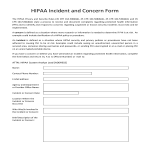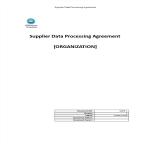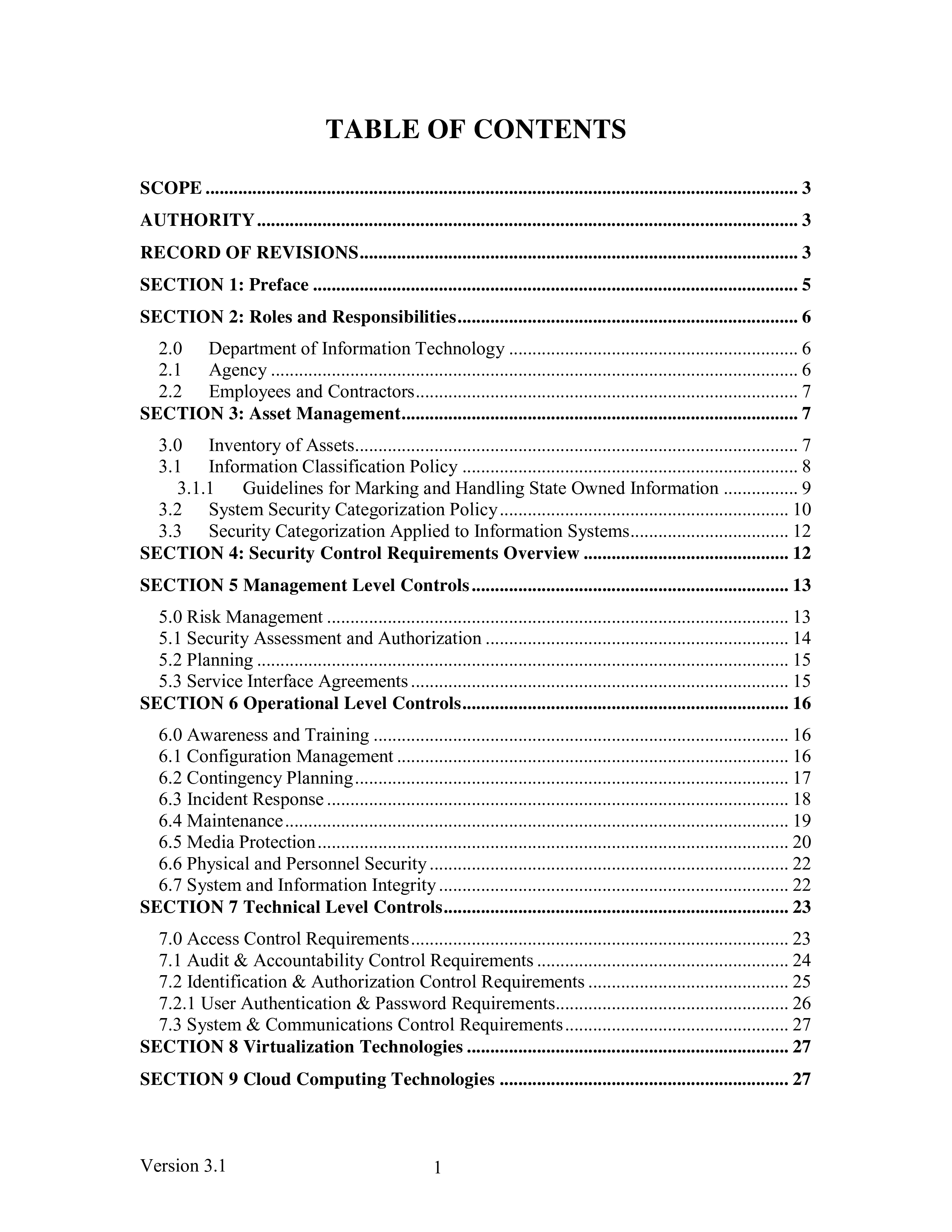IT Security Policy Government Example
Save, fill-In The Blanks, Print, Done!

Download IT Security Policy Government Example
Adobe Acrobat (.pdf)- This Document Has Been Certified by a Professional
- 100% customizable
- This is a digital download (511.35 kB)
- Language: English
- We recommend downloading this file onto your computer.
How to draft a Policy for the IT Security of your organization? An easy way to start implementing IT Security is to download this Information Security Policy template now!
Every day brings new projects, emails, documents, and task lists, and often it is not that different from the work you have done before. Many of our day-to-day tasks need to be protected well by our IT Security controls. Our private, business and legal documents are all saved on our computers and in the cloud. Especially governments, who are not very familiar with IT security, can benefit from making a detailed IT security policy. For example, it's important to make sure that each agency is responsible for:
- Initiating measures to assure and demonstrate compliance with the security requirements outlined in this policy
- Implementing and maintaining an IT Security Program
- Identifying a role (position/person/title) that is responsible for implementing and maintaining the agency security program
- Ensuring that security is part of the information planning and procurement process
- Participating in annual information systems data security self-audits focusing on compliance to this State data security policy
- Determining the feasibility of conducting regular external and internal vulnerability assessments and penetration testing to verify security controls are working properly and to identify weaknesses
- Implementing a risk management process for the life cycle of each critical IT System
- Assuring the confidentiality, integrity, availability, and accountability of all agency information while it is being processed, stored, and/or transmitted electronically, and the security of the resources associated with those processing functions
- Assuming the lead role in resolving Agency security and privacy incidents
- Abiding by the guidelines established in the Government Database Personal Information Protection Act (PIPA). Passwords must not consist of all numbers, all special characters, or all alphabetic characters
- Passwords must not contain leading or trailing blanks
- Change user-level passwords at regular intervals (at least annually)
- Administrative-level account passwords shall be changed every 90 days or sooner Passwords protecting access to systems or applications that have been categorized as Moderate or High shall be changed every 90 days or sooner
- Password reuse must be prohibited by not allowing the last 10 passwords to be reused with a minimum password age of at least 2 days
- Where possible, users should be prohibited from only changing/or adding one (1) character to their previous password (i.e., users should be prohibited).
Appropriate data security controls reduce the likelihood (and impact) of data breach incidents during various phases of the data lifecycle. The purpose of this standard is to set out the rules for securing the companies' data during transmission and storage. This document provides best practice recommendations on information security management for use by those responsible for initiating, implementing or maintaining information security management systems (ISMS).
Nowadays, with the digitalization of our society, the need for data protection became more important. The latest IT Security Standards involve the application of technology to broader social and institutional contexts, and thereby contributes to the servitization of companies, and affects how they compete and interact. This document contains security technology solutions to protect data classified as “Highly Sensitive”, “Sensitive”, “Private” or “Public” as per the Data Classification Standard and Data Handling Guidelines. Specifically:
- Cryptography – Encryption and hashing solutions for protecting sensitive data when in transit or storage, and
- Data Masking – Data masking is a technology for obscuring sensitive information in non-production environments. Through data masking [Company Name] protects the content of sensitive data in non-production environments to ensure that:
- Application developers, testers, privileged users and outsourcing vendors do not have unauthorized access to such information.
- The data maintains the referential integrity of the original production data.
Using this document template guarantees you will save time, cost and efforts! It comes in Microsoft Office format, is ready to be tailored to your personal needs. Completing your document has never been easier! Download this It Security Policy template now for your own benefit!
Besides this document, make sure to have a look at the IT Security Roadmap for proper implementation and this fit-for-purpose IT Security Kit here with over 40 useful templates. The document(s) are easy to modify and can be downloaded directly after purchase.
DISCLAIMER
Nothing on this site shall be considered legal advice and no attorney-client relationship is established.
Leave a Reply. If you have any questions or remarks, feel free to post them below.
IT Security Standards Kit
What are IT Security Standards? Check out our collection of this newly updated IT Security Kit Standard templates, including policies, controls, processes, checklists, procedures and other documents.
Read moreRelated templates
Latest templates
Latest topics
- Excel Templates
Where do I find templates for Excel? How do I create a template in Excel? Check these editable and printable Excel Templates and download them directly! - GDPR Compliance Templates
What do you need to become GDPR compliant? Are you looking for useful GDPR document templates to make you compliant? All these compliance documents will be available to download instantly... - Google Docs Templates
How to create documents in Google Docs? We provide Google Docs compatible template and these are the reasons why it's useful to work with Google Docs... - IT Security Standards Kit
What are IT Security Standards? Check out our collection of this newly updated IT Security Kit Standard templates, including policies, controls, processes, checklists, procedures and other documents. - Letter Format
How to format a letter? Here is a brief overview of common letter formats and templates in USA and UK and get inspirited immediately!
cheese




